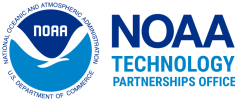Geocollaborate Tool is improving situational awareness and decision making across many economic and government sectors
We are exposed to a wide variety of extreme weather events, such as wildfires, floods, earthquakes, severe storms, and volcanic eruptions. Natural hazards turn into disasters when lives are lost and livelihoods are damaged or destroyed. Some hazards, whether manmade or natural, become catastrophic disasters or large scale mass casualty events, which bring entire regions to a standstill. When these incidents occur, all those involved in responding and making decisions need to collaborate on the same map at the same time with accurate geospatial data in real time across multiple platforms. Personnel on the ground need critical information to assist in responding and making damage assessments, whether it’s wildfires spreading in shifting winds, intense flooding that requires evacuations and rescue, or a hazardous chemical spill, while those in other support capacities provide resources and information, while keeping the big picture in mind.
In 2017, a trifecta of storms—Hurricanes Harvey, Irma and Maria—rolled ashore bringing storm surge, heavy rainfall, and violent wind to portions of the United States, Puerto Rico, and the Caribbean Islands. Harvey made landfall along the Texas coast on August 25, 2017. Its slow movement and record-setting rainfall over the Houston metro area led to widespread flooding over multiple days. Irma crossed over the Caribbean Islands and Florida, and moved into the southeastern United States. Hurricane Irma’s landfall on the U.S. coastline roughly two weeks after Harvey marked the first time in a century that two storms rated Category 4 or stronger struck the U.S. mainland in the same year. These storms left significant trails of damage and destruction in their wake, including coastal and inland flooding, extensive wind damage, and numerous power outages. The long-lasting impacts to the electrical infrastructure of Puerto Rico from Maria resulted in thousands of residents being without power for months. As with any disaster, communities came together, and in their various capacities assisted those impacted. Federal, state and local agencies deployed units including first responders who navigated various conditions to perform operations on the ground. Without communications, many of the ongoing efforts would be extremely risky or futile.
